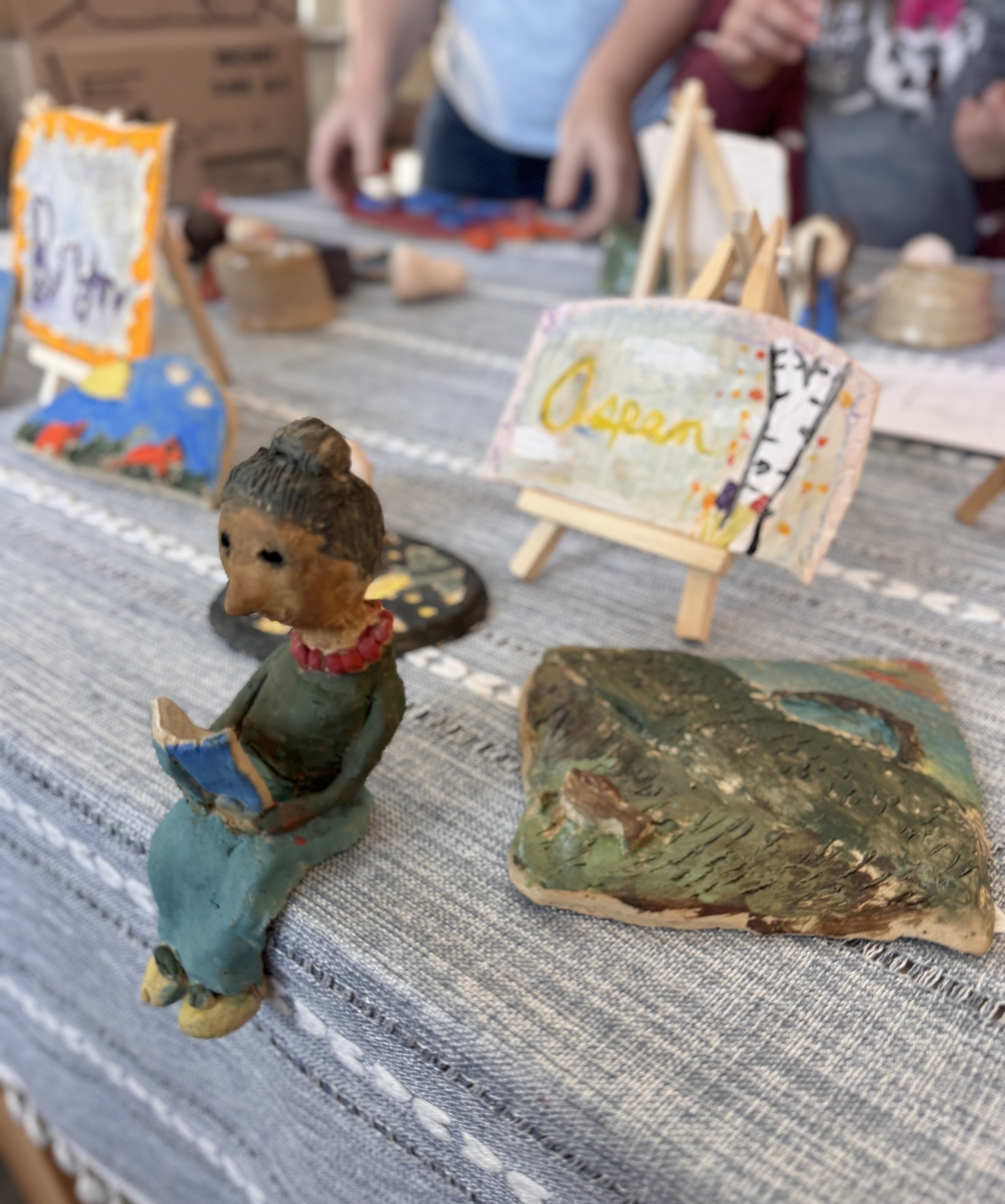Clay Boy

Meet The Teacher: Katherine Drummond
Katherine is a big believer that clay is magic. It offers a unique experience that just can’t be found in other art forms. Children rarely have the ability to get wet and messy in a classroom setting and creating a safe space for them to do this provides them a joyful freedom and growth in an endless array of skills.
Project Description
This project brings in literature with a story called Clay Boy by Mirra Ginsburg. After reading the story students are inspired to make their own small clay person using pinch pot and sculpting techniques.
Materials
- Clay boy book by Mirra Ginsburg
- Underglaze
- Tools for scoring
- Paint Pallets
- Vinegar/Slip
- Clay
- Brush for applying slip
Grade Level
Elementary School
Difficulty
Easy
Student Hands-On Time
90 minutes
Teacher Prep Time
30 minutes
Project Cost / Cost Per Student
7
National Core Arts Standards - Visual Arts
- Creating - Generate and conceptualize artistic ideas.
- Creating - Organize and develop artistic work.
- Creating - Conceiving and developing new artistic ideas and work.
- Connecting - Connect personal experiences with artmaking and meaning.
21st Century Skills
- Critical Thinking & Problem-Solving
- Creativity & Innovation
- Communication
- Information Literacy
- Flexibility & Adaptability
- Initiative & Self-Direction
- Social & Cross-Cultural Skills
- Productivity & Accountability
STEAM Education
- Arts
Differentiations and Accommodations
Differentiation
IEP
Accommodation
Go over student accomodations. Touch base with student regarding directions and process. Have the student share in their own words what the next steps are.
Differentiation
504 Accommodations
Accommodation
Go over student accomodations. Make sure they know what the directions are can put into their own words the steps required for the project.
Differentiation
Advanced Learners
Accommodation
Challenge these students to add details, clothing, accessories... What story would you write to go along with your "clay boy"?
Differentiation
Struggling Learners
Accommodation
Consider having these students make only one project. Assist them in planning out their work with the given template and help them with attaching the pieces.
Learning Objectives: Knowledge
Students will develop an understanding of clay properties, how to sclupt and attach clay while fostering creativity and critical thinking.
Learning Objectives: Skills
Students will learn how to score/slip clay and how to attach pieces to one another. They will practice pinch pot and sculpting techniques while creating a unique sculpture of their own.
Learning Objectives: Attitudes/Values
We will address following directions and having patience when we work with clay. In relation to the book, we will address any meaning behind the story and what the author might have wanted you to take away.
Formative Assessment
Teacher will check to make sure students are placing small holes in hollow pieces for air to escape. They will check that students are scoring and slipping so attachements are secure.
Summative Assessment
Evaluate student work on creativity, technique in attaching pieces, sclupting details that make the piece look like a person.
Reflection and Discussion
What about this project was most challenging? What did you think about the story? Take note of any feedback for future lessons. If time allows have students share their creations and one thing they like about each others work.
Lesson Activities
Read Aloud 10-15 Minutes
Read aloud Clay Boy to students. Discuss the setting and why they think the author wrote this book. Make the connection to the stages of clay and what makes a piece explode.
Demonstration 5-10 Minutes
Model how to make a pinch pot and show placing the two pieces together to make a ball, show how to put a small hole in the piece for the air to escape. Model how to sculpt details into the round ball you made like a nose, ears and eyes. Next show how to attach pieces making a body shape. Consider details and accessories you might want your sculpture to have. Share examples with students of different types of sculpted people.
Body Part Mix Up 30-45 Minutes
Have each student make one body part. You can have students draw these randomly from a folded up piece of paper with the name of the part written on it. For example one student might make eyes, another noses or the entire head. Another student might make legs, another feet and hands... Then the students walk around selecting bits and parts that were made by other students and piece together a mixed up person. *This can also be done at the end if extra time allows
Clay Boy Creation 30-45 Minutes
Students will be given a planning sheet to plan out their sculptures. Each student will complete either one mixed up sculpture, their own "clay boy" sculpture or both as time allows. These will be painted with underglazes.
Reflection/Discussion 5-10 Minutes
Students will discuss their pieces, what they liked about the project and any challenges that came up.
Clean Up 10 Minutes
Students will follow the clean up checklist and make sure the classroom is ready for the next class.


